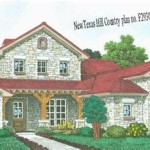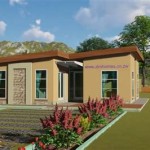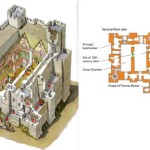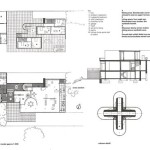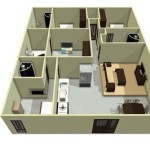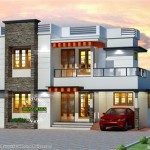Two Story Mediterranean Home Plans: A Guide to Design, Style, and Considerations
Mediterranean home design evokes images of sun-drenched villas, terracotta roofs, and tranquil courtyards. The style, rooted in the architectural traditions of countries bordering the Mediterranean Sea, offers a timeless elegance and a connection to warm climates. Two-story Mediterranean home plans provide the opportunity to fully embrace the architectural features of this style while accommodating the needs of modern living. This article explores the defining characteristics, design elements, and practical considerations involved in creating a two-story Mediterranean home.
The Mediterranean architectural style is not monolithic; it encompasses several variations, each with distinct influences. Spanish Colonial, Tuscan, and Italianate styles are all variations of the broader Mediterranean theme. These sub-styles share common features like stucco exteriors, arched windows and doorways, and tiled roofs, but differ in specific details such as ornamentation, roof pitch, and the use of specific materials.
When considering a two-story Mediterranean home plan, it is important to understand the core principles of the style and how they translate into a multi-level design. The overall aesthetic should prioritize a sense of warmth, openness, and a connection to the outdoors. This is achieved through the strategic use of natural light, the incorporation of outdoor living spaces, and the careful selection of building materials and color palettes.
Key Features of Two-Story Mediterranean Homes
Several defining characteristics contribute to the overall Mediterranean aesthetic. The integration of these elements into a two-story design contributes to its authenticity and visual appeal.
Exterior Design: The exterior of a Mediterranean home is typically characterized by stucco walls, often finished with a textured surface. The color palette tends towards warm, earthy tones like white, beige, and terracotta. Roofs are typically low-pitched and covered with terracotta tiles, a signature element of the style. Arched doorways and windows are also prevalent, adding a touch of elegance and softening the angularity of the structure. Wrought iron accents, such as railings, gates, and light fixtures, further enhance the Mediterranean feel. Balconies and loggias, often found on the second story, provide outdoor living spaces and contribute to the building's visual depth.
Interior Design: The interior of a Mediterranean home emphasizes natural light and open spaces. Large windows and doors are strategically placed to maximize sunlight penetration. Interior walls are often finished with stucco or plaster, mirroring the exterior aesthetic. Tile flooring is common, particularly in high-traffic areas like kitchens and bathrooms. Wood beams, either structural or decorative, can add warmth and character to ceilings. The color palette generally reflects the exterior, with warm, earthy tones dominating. Accents of blue, green, and yellow can be used to add visual interest and reflect the colors of the Mediterranean landscape. Furniture tends to be substantial and comfortable, often featuring natural materials like wood, leather, and woven fabrics.
Landscaping: The landscape surrounding a Mediterranean home plays a crucial role in completing the overall aesthetic. Drought-tolerant plants, such as olive trees, cypresses, lavender, and rosemary, are commonly used. Patios and courtyards, often paved with stone or tile, provide outdoor living spaces for dining, relaxation, and entertainment. Fountains and water features can add a soothing ambiance. The landscaping should complement the architecture and create a seamless transition between the indoor and outdoor spaces.
Designing a Functional Two-Story Mediterranean Home
Beyond the aesthetic considerations, a successful two-story Mediterranean home plan must also be functional and meet the specific needs of its occupants. Careful planning is required to ensure that the layout maximizes space utilization, promotes comfortable living, and takes advantage of the architectural features of the style.
Floor Plan Considerations: The floor plan should be designed to promote a natural flow between rooms and to maximize natural light. Open-concept layouts are often preferred, particularly in the main living areas. The kitchen is typically a central gathering space, often connected to the dining room and living room. Bedrooms are generally located on the second floor, providing privacy and separation from the main living areas. Bathrooms should be well-appointed and feature high-quality materials. Consider incorporating features like walk-in closets, en-suite bathrooms, and laundry rooms on the second floor for added convenience.
Integrating Indoor and Outdoor Spaces: A key aspect of Mediterranean design is the seamless integration of indoor and outdoor spaces. This can be achieved through the use of large windows and doors that open onto patios, balconies, and courtyards. Consider incorporating covered outdoor living areas, such as loggias or pergolas, to provide shade and protection from the elements. Outdoor kitchens and dining areas can further enhance the outdoor living experience. The transition between the indoor and outdoor spaces should be fluid and natural, blurring the lines between the two.
Maximizing Natural Light and Ventilation: Natural light is a crucial element of Mediterranean design. Large windows and doors should be strategically placed to maximize sunlight penetration. Skylights and clerestory windows can also be used to bring natural light into interior spaces. Proper ventilation is also important, particularly in warm climates. Consider incorporating features like cross-ventilation and ceiling fans to promote air circulation. The orientation of the house on the lot should also be considered to take advantage of prevailing winds and minimize exposure to the sun's heat.
Material Selection and Cost Considerations
The choice of building materials significantly impacts the overall aesthetic and cost of a two-story Mediterranean home. Selecting materials that are authentic to the style and durable enough to withstand the local climate is essential.
Stucco and Roofing Materials: Stucco is the most common exterior wall finish for Mediterranean homes. It is durable, relatively inexpensive, and can be textured to create a variety of finishes. Terracotta tiles are the traditional roofing material, but concrete tiles that mimic the look of terracotta are also a viable option. The choice between terracotta and concrete tiles will depend on budget, durability requirements, and aesthetic preferences.
Windows and Doors: Arched windows and doors are a defining feature of the Mediterranean style. Wood or metal frames are typically used, often with wrought iron accents. Energy-efficient windows and doors should be selected to minimize energy consumption and reduce utility costs. Consider incorporating features like low-E glass and weather stripping to improve thermal performance.
Interior Finishes: Interior finishes should complement the overall Mediterranean aesthetic. Tile flooring is a common choice, particularly in high-traffic areas. Wood flooring, either solid hardwood or engineered wood, can be used in bedrooms and living rooms to add warmth and character. Stucco or plaster walls are typical, often finished with a textured surface. The choice of paint colors should reflect the warm, earthy tones of the Mediterranean landscape. Decorative elements, such as wrought iron hardware, ceramic tiles, and hand-painted details, can add a touch of authenticity.
Cost Considerations: The cost of building a two-story Mediterranean home will vary depending on several factors, including the size and complexity of the design, the quality of materials used, and the location of the project. More elaborate designs with custom features and high-end materials will naturally be more expensive. It is important to develop a detailed budget and work with an experienced architect and contractor to ensure that the project stays within budget. Consider prioritizing essential features and selecting cost-effective alternatives where possible without compromising the overall aesthetic and quality of the home.
Creating a two-story Mediterranean home involves a holistic approach, encompassing architectural design, interior styling, and landscape integration. By carefully considering the defining characteristics of the style, the functional needs of the occupants, and the selection of appropriate materials, it is possible to create a home that is both beautiful and livable, a true reflection of the Mediterranean spirit.

Mediterranean House Plan 2 Story Narrow Lot Beach Home Floor Bay Plans Coastal

Two Story Mediterranean House Plan 66010we Architectural Designs Plans

Mediterranean House Plan 2 Story Coastal Floor Plans Craftsman

Mediterranean House Plan 2 Story Narrow Lot Home Floor Plans Style

Plan 66237we Two Story Mediterranean House Homes Plans

Mediterranean House Plan 2 Story Coastal Style Floor Plans Homes Modern

Mediterranean Home With 5 Bdrms 2647 Sq Ft House Plan 107 1169
Mediterranean Home With 4 Bdrms 2550 Sq Ft House Plan 107 1161

5 Bedroom Two Story Mediterranean Home Floor Plan

Mediterranean House Plan Luxury Style Home Floor

